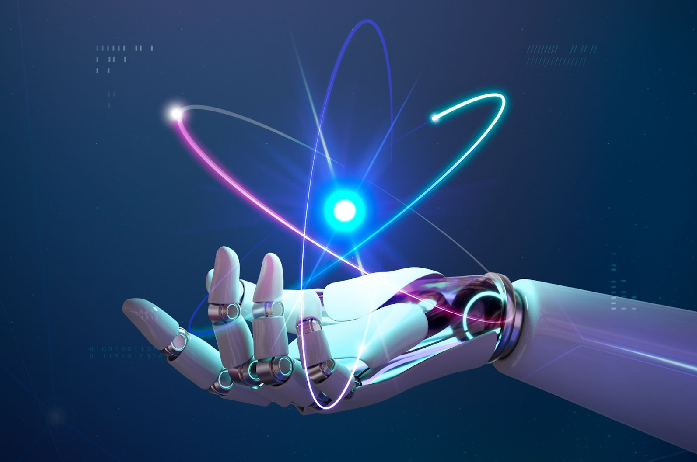Introduction
In today’s rapidly evolving tech landscape, combining Artificial Intelligence (AI) with modern web development frameworks like ReactJS offers powerful and dynamic solutions. Providing the opportunity to develop truly intelligent systems that are dynamic and highly interactive. From a vast number of available front-end frameworks, ReactJS has risen to become a strong weapon for developers targeting the creation of AI-based applications.
In this article, the author takes an opportunity to explain how the collaboration of AI and ReactJS can cause the creation of future solutions that will fit modern users. This paper focuses on the emergence of AI and its application in developing websites.
AI has influenced a wide range of industries and offers solutions that include aspects such as predictive analytics, natural language processing, and image recognition. Machine learning through web development helps in designing intelligent websites and for this, it learns from the users’ population, observes the user behaviors, and customizes their presentation and functionality as well as performs repetitive work. These capabilities do not only increase users’ interest; they also help in the management and optimization of processes.
Why ReactJS?
ReactJS is another JS library created by Facebook to develop user interfaces with a heavy emphasis on a single-page application in which advanced interactivity is often important. Because the architecture of ReactJS is component-based, it effectively utilizes the virtual DOM, and its main concept is declarative, it can be recommended for developing sophisticated and interactive web applications.
Leveraging ReactJS for Efficient AI-Driven Applications
- Component-Based Architecture: One of the main benefits of using React is that it provides a component-based architecture that enables developers to create various independent components responsible for their state – this is especially useful when working with large applications. When it comes to integrating the AI functionalities, this modular approach turns out to be effective because an AI model can also be included in a reusable form.
- Virtual DOM: ReactJS’s virtual DOM is implemented to provide optimal performance. In that, it re-renders only the changed UI elements. This efficiency is especially valuable when using AI applications where the need to update content and respond quickly is necessary.
- Declarative Nature: ReactJS has a highly declarative nature. It is friendly to developers while handling complex logic in the application thus making it easy to debug.
Incorporating AI into ReactJS Applications
There are important practices that need to be followed when using AI in ReactJS applications. It includes identifying the right AI models to be used, identifying which APIs are most relevant, and creating a working interface between the AI components and the ReactJS front end. A critical part of this integration is ensuring that the chosen AI algorithms align with the application’s goals and performance requirements.
Selecting the Best AI Algos
Despite AI models being classified based on a variety of concerns, the acceptance depends on the demand of the application.
Highly preferred AI models for web applications are:
- Machine Learning Models: For data mining, decision trees, clustering, and decisions based on predictive modeling.
- Natural Language Processing (NLP) Models: Especially for applications like AI chatbots, sentiment analysis, and text summarization.
- Vision detection: It recognizes images and facial expressions, and scans and detects objects.
Developers can leverage free materials from platforms like TensorFlow, in order to run machine learning with JavaScript.
Leveraging AI APIs
Due to the leveraging of the AI APIs, there are absolute options for APIs for AI that developers can employ from giant IT companies such as Google, Microsoft, and IBM among others. These APIs provide ready-made AI services that can be implemented into the ReactJS applications. For instance:
- Google Cloud AI: Offers natural language processing, vision, translation, and other tools through Programmable APIs.
- Microsoft Azure Cognitive Services: Provides speech API and language API and also computer vision API.
- IBM Watson: Offers resources for further processing like natural language processing, machine learning, and data analysis APIs.
These APIs aid the developers in calculating complicated AI features in their software even while they have little to no deep AI knowledge.
Just like in the previous section, there is a sharp integration between the operation of AI and the implementation of ReactJS.
There is a need to properly plan the manner through which the different AI components will interface and work with the ReactJS front end.
Here are some key considerations:
- State Management: As for any web application, managing the state is critical, especially for interchanging data between the AI models and the ReactJS components. One can use Libraries such as Redux or React’s Context API to efficiently handle the application state.
- Asynchronous Data Handling: Training models or data preprocessing are usually required in the AI environment which contains asynchronous tasks. It is possible to keep asynchronous data flows and provide an opportunity to control the UI using built-in hooks such as `effect` and `state` of the React environment.
- Performance Optimization: There is a fact that computations provided by AI technologies can be highly consuming in terms of resources. Some of the crucial React performance optimization techniques include Lazy loading, Code splitting, and Memoization. These are some of the ways that can be used to enhance the performance of an application in ReactJS.
Case Studies: Solutions with the Help of Artificial Intelligence Using ReactJS
To illustrate the potential of AI and ReactJS integration, let’s explore a few case studies:
- Intelligent Chatbots
An example of an intelligent chatbot is the e-commerce platform that integrates the application using ReactJS and a Google Cloud AI natural language processing model. The targeted features would be to comprehend the client’s question, promptly respond, and, if needed, facilitate the choice of products. Choosing ReactJS is beneficial in maintaining user interactions in real time and having a fluent UI.
- Personalized News Feed
A news aggregator website used big data and specifically implemented the mechanisms of machine learning to study the users’ behavior and their choices. Combined with the proposed architecture and their ReactJS frontend, the site could suggest a self-interested news feed.
React solutions helped to make the structure of the development component-based; thus, the recommendation engine became easily separable and effortless to maintain within the given system.
- Image Recognition Application
A computer vision solution was implemented in an online educational program with TensorFlow.Js to propose a dynamic system for students to learn the application thoroughly. The application created for this purpose and developed under the framework of ReactJS lets the students upload the images and get feedback on the content immediately. Due to the Virtual DOM and prodigious rendering of React, application lag did not become an issue, even while handling image processing operations.
Future Trends and Opportunities
The prospects of the combined cooperation of AI and ReactJS can be huge, as creating fantastic solutions and enhancing the systems in each sphere.
Emerging trends include:
- Edge AI: Using AI models on end-node devices like smartphones, IoT, etc to minimize latency and privacy issues. Based on the characteristics of ReactJS described above, ReactJS is suitable for edge AI application development.
- AutoML: Customizable machine learning interfaces to minimize the programmability of the creation and application of machine learning models. The combination of AutoML with React JS can popularize Artificial Intelligence Development among the developers.
- AI-Powered UI/UX Design: Utilizing AI to interpret the users’ behaviors and provide prompt and optimal UX/UX modifications. Such adaptable interfaces can probably be achieved with the help of the declarative nature of ReactJS.
Conclusion
The above figures show the readiness and possibilities of bringing Reinforcement Learning and AI to integration with ReactJS to create new and advanced web applications. With the help of such features of React, as well as through the integration of sophisticated AI models and APIs, developers can create intelligent systems that are as close as possible to reflecting the user’s needs and are characterized by interactivity and high efficiency. Having seen how the integration of AI is possible with ReactJS, more innovation and impact will be achieved as the AI technology advances.













